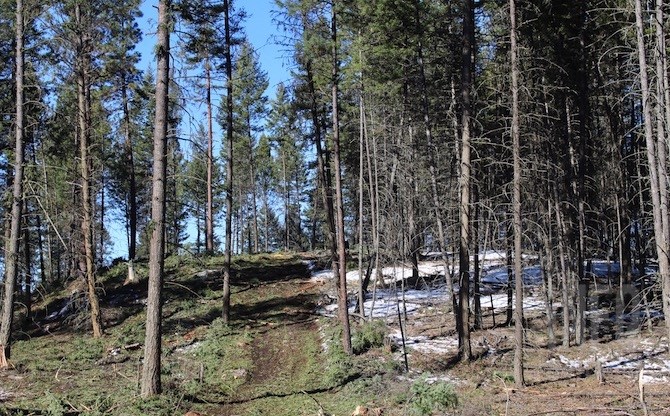
The District of Sicamous is using forest fuels as part of a new bioheat project, while the City of Kelowna is reducing greenhouse gas emissions by using landfill waste.
(ROB MUNRO / iNFOnews.ca)
April 19, 2022 - 9:30 PM
A ground-breaking ceremony is being held in Sicamous this week to commemorate the construction of an exciting new environmentally-forward facility.
A $1.74M Community Bio-Heat Facility is to be built in the industrial park at 510 Thomsen Place, said District of Sicamous spokesperson Sarah Kyllo in an email to iNFOnews.
The facility will consist of a biomass boiler heating system and boiler house, which will repurpose wood waste into fuel, providing thermal heat to several buildings within the park. The project will aid in the production of clean energy and the reduction of greenhouse gas emissions in the community.
“It has been about four years since we first applied for grant funding that targeted municipalities that don’t have natural gas and are looking for greener alternatives,” said Town Manager at Sicamous Development, Evan Parliament. “We depend on sources like propane and fossil fuels and want to go green and reduce our carbon footprint.”
READ MORE: Kelowna lags far behind Canada and B.C. in housing starts this year
Parliament said the District was able to secure national and provincial funding, along with providing funding of their own for the project.
“We are a little community but we are quite proud of this, it is a start,” he said. “There are facilities out there like this one, but ours is unique in that we don’t have natural gas in the community. Instead of targeting one facility, for example a public swimming pool, we are targeting an entire industrial park.”
Parliament is hoping the project will raise awareness and be used as an example for other similar communities that don’t have natural gas and want to reduce greenhouse gas emissions.
“I think a lot of residents think this is a district energy system that provides power, but it is a system that provides heat,” he said. “We are taking wood waste from the forest floor, chipping it and burning it to provide heat. This reduces wildfire hazards and the need for fossil fuels.”
“I think with Friday’s announcement people will get a clearer understanding of the project,” Parliament said. “We are excited, a lot of work has gone into this.”
READ MORE: Home sales slowing in Okanagan, Kamloops but real estate market far from balanced
The City of Kelowna is helping to reduce greenhouse gas emissions using the Kelowna Landfill, by using the waste from the landfill to produce renewable natural gas.
“We’re getting over 60 terajoules of renewable natural gas a year from this landfill, which is currently meeting the natural gas needs of almost 690 homes in the province,” said Fortis B.C. spokesperson Jas Baweja in an email to iNFOnews.
Baweja said renewable natural gas is produced in a different manner than conventional natural gas. It is derived from biogas, which is produced from decomposing organic waste from landfills, agricultural waste and wastewater from treatment facilities.
“As renewable natural gas is derived from organic sources, it uses existing carbon already within the ecosystem and it does not contribute any net carbon dioxide into the atmosphere,” he said. “It also mixes seamlessly into existing natural gas infrastructure and in doing so, it decarbonizes the natural gas supply, displaces equivalent volumes of conventional natural gas and lowers greenhouse gas emissions overall.”
To contact a reporter for this story, email Shannon Ainslie or call 250-819-6089 or email the editor. You can also submit photos, videos or news tips to the newsroom and be entered to win a monthly prize draw.
We welcome your comments and opinions on our stories but play nice. We won't censor or delete comments unless they contain off-topic statements or links, unnecessary vulgarity, false facts, spam or obviously fake profiles. If you have any concerns about what you see in comments, email the editor in the link above.
News from © iNFOnews, 2022